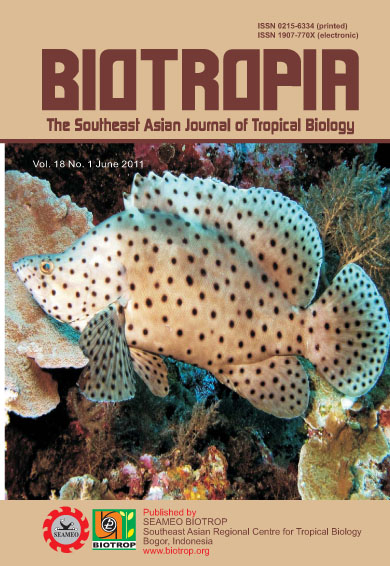
Tags
EFFECT OF PHYSIOLOGICAL AGE AND GROWTH REGULATORS ON CALLUS BROWNING OF COCONUT ENDOSPERM CULTURE IN VITRO
Content Language : English

The possibility of physiological age and growth regulators affecting callus browning of coconut endosperm was investigated. Solid endosperm explants of four coconut fruits from same brunches of two coconut cultivars “Samoan Dwarf” were grown on modified Murashige and Skoog (MS) formula with addition of 10 mg l-1 putresine, 2.50 g l-1 activated charcoal (AC), 1.70 g l-1 phytagel, 0, 10-6, 10-5, 10-4, 10-3 M 2,4-dichlorophenoxyacetic acid (2,4-D) or 4-amino-3,5,6-trichloropicolinic acid (Picloram) combined with 10-5M 6-benzylaminopurine (BA). Callogenesis occurred on 98.83% of explants. Callus browning between different physiological ages (antipodal and micropylar tissues) of coconut endosperm at 9, 26 and 31 weeks of culture (WOC) was significantly different, but not at 16 and 21 WOC. Auxins of 2,4-D and Picloram did not affect significantly callus browning of endosperm cultures. Auxin doses at 10-6, 10-5, and 10-4M decreased significantly callus browning at 9 and 16 WOC, respectively, but at 10-6M browning was less significant compared to other doses at 21 WOC. Auxin dose at 10-3 M caused less significant browning compared to other doses at 31 WOC. The addition of BA decreased significantly callus browning at 9 WOC , but did not affect callus browning thereafter.
Link

This work is licensed under a Creative Commons Attribution-NonCommercial-NoDerivatives 4.0 International License.
